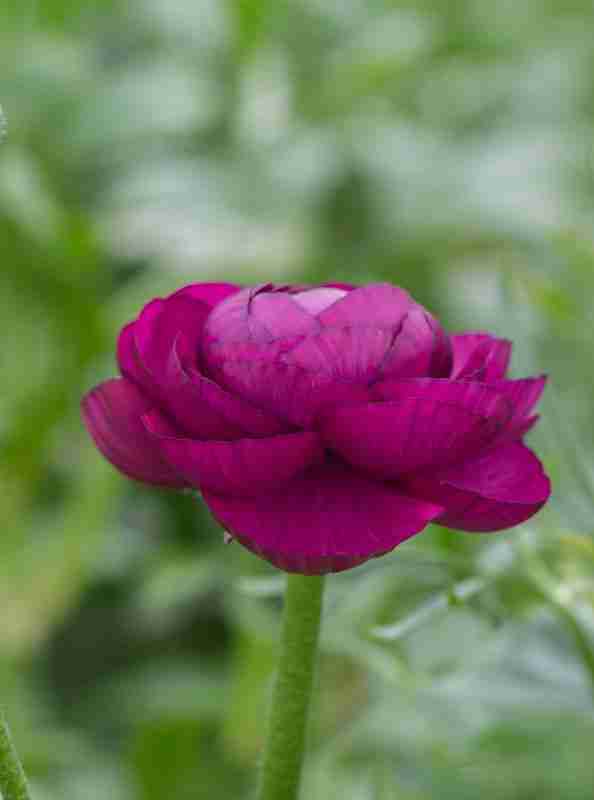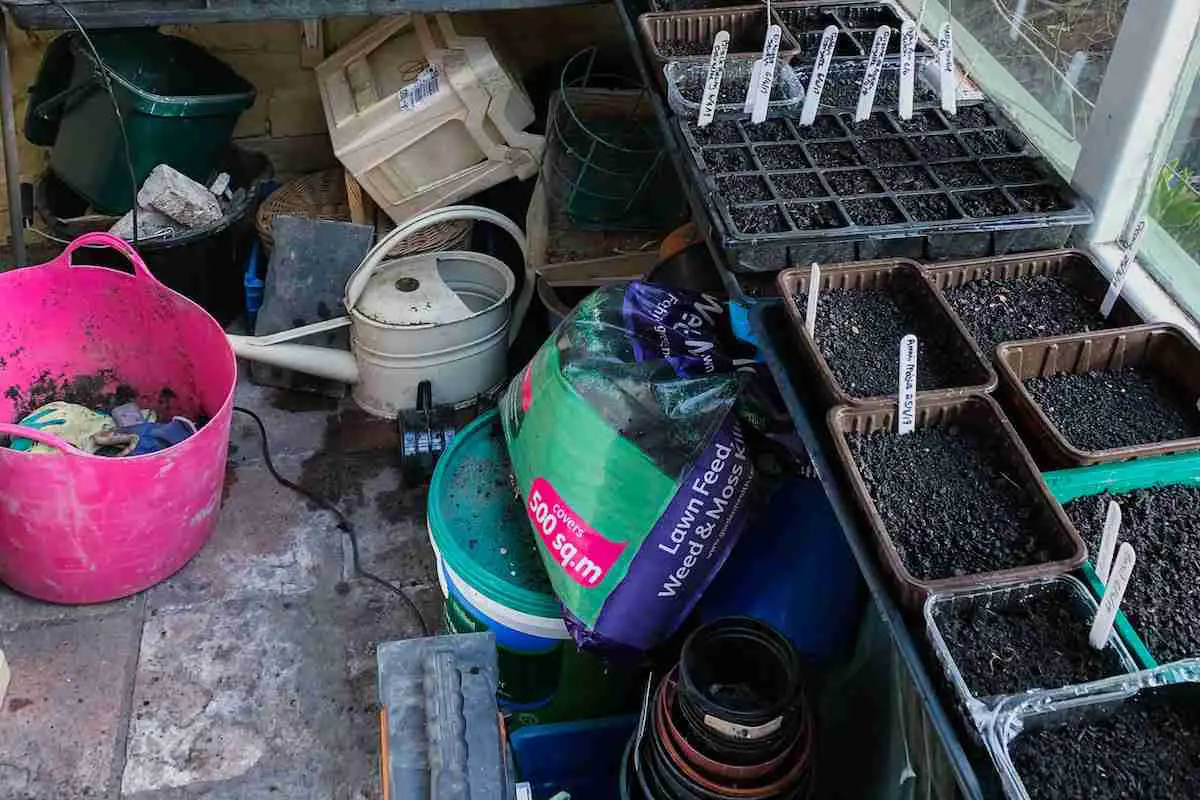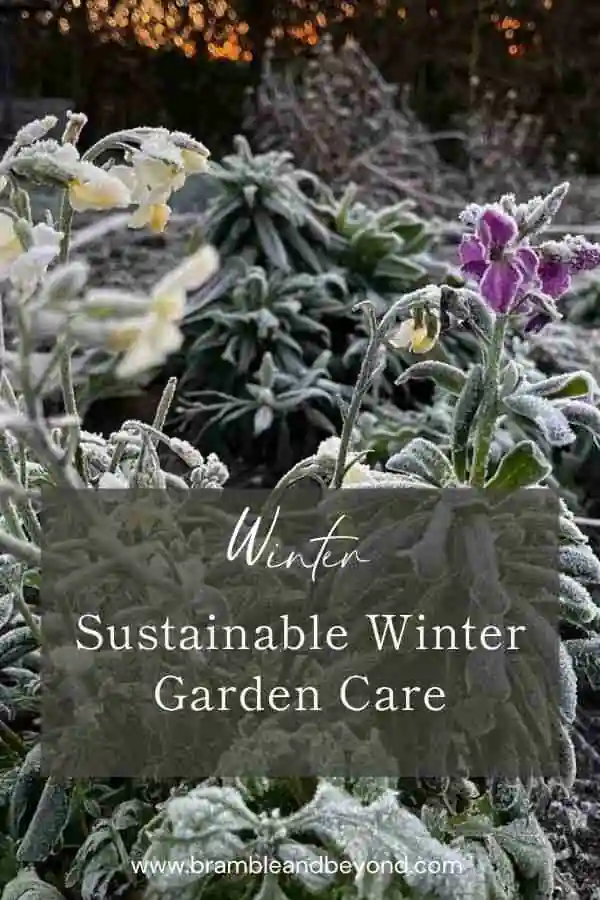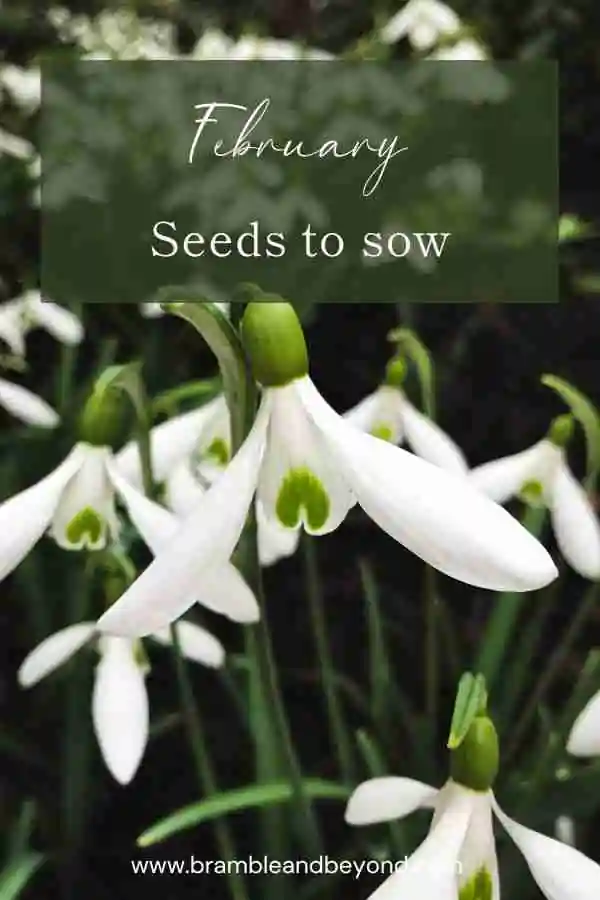Disclosure: This post may contain affiliate links, meaning I get commission if you decide to make a purchase through my links, at no cost to you. Please read my Affiliate Disclosure for more information.
January can be a tricky month for us flower gardeners, especially in colder regions. With snow and frost covering much of the ground, it may seem like there's not much to do in your flower garden. But fear not! There are plenty of garden tasks for January you can tackle (if you feel so inclined!) to ensure your garden is ready for the glorious springtime ahead.
Preparing your cut flower garden for spring is essential to maintain a healthy and productive space. So, let's dive into some tasks you can complete this January to get ahead of the game.
Garden tasks for January
Now, remember, this isn't a strict to-do list. You can take your time and spread these jobs out over subsequent months. No rush! If you feel like nurturing yourself indoors, go ahead and give yourself permission. But if you're itching to get your hands dirty and feel like you're making progress, let's tick off these tasks from your list.
Stay on top of your soil health
Keeping your soil healthy is key to getting the most out of your garden.
First things first, let's tackle those weeds while they're still in the early stages of growth. Be proactive and nip them in the bud before they take over. Grab a sharp hoe and swiftly remove those pesky invaders from their roots.
Just a friendly reminder: if you happen to have clay soil, it's best to avoid walking on it when it's wet. This helps prevent compacting the soil's structure, which can cause more harm than leaving the weeds in. So, if possible, try to weed without stepping on the soil.
If you follow a no dig approach, persistent weeds will eventually weaken and die if you consistently cut them off before they can establish themselves. It might take a few seasons of dedicated attacks, but you'll win the battle eventually.
Remember, soil plays a crucial role in providing plants with nutrition, water, and support. So, by preparing your soil for the upcoming season, you're setting yourself up for less watering and feeding down the line.
Once you've cleared the ground of weeds, it's time to add a generous layer of organic matter like compost, mulch, or manure on top. This will provide essential nutrients and maintain consistent moisture levels throughout the season. Plus, it'll improve drainage and aeration, promoting healthy root growth.
Oh, and don't forget, healthy soil should be teeming with worms. They're nature's little helpers!
Add wood ash to your soil
If you happen to have a trusty wood-burning stove, you can put those ashes to good use in your garden. Wood ash is a fantastic source of lime and potassium, which can benefit your plants.
Most plants prefer slightly alkaline soil conditions, so adding wood ash helps neutralise acidic soil. Just be cautious not to sprinkle it near acid-loving plants like Rhododendrons, Hydrangeas, and Ferns.
Lightly dust the ash across the top of the soil, avoiding clumps. It's best to spread it before adding your top layer of compost, as it can easily be washed or blown away by the weather.
A quick note: make sure the wood ash comes from a fire that only burned wood. We don't want any other chemicals finding their way into your precious soil.
Snip those sweet pea tips
Ah, sweet peas! Their delightful fragrance and beautiful blooms make them a must-have in any home or garden. But here's the thing – their vase life is short-lived. So, having your own ready supply of these beauties is an absolute blessing.
Sweet peas are hardy annuals, and if you want an early flowering season, you can germinate the seeds in autumn for a head start. By January, your baby plants should be ready for a little grooming.
Trimming the tips of your sweet peas encourages bushier growth, resulting in more glorious blossoms throughout the season.
Get yourself a pair of sharp scissors, and with a steady hand, carefully clip off the growing tips, leaving behind two sets of real leaves. Your sweet peas will thank you with a bountiful display!

Plant out your ranunculus
Ah, the ravishing ranunculus! This springtime gem with delicate flowers in various pastel hues is a showstopper in any arrangement. It's time to bring this spectacular focal flower into your garden.
Ideally, you started your ranunculus corms in late autumn, so by now, you should have baby plants ready to be planted out in winter or spring. But if you're running a bit behind, don't worry! There's still time to start your corms.
Wait for a few days of milder weather, not too cold, and soak your corms. Then, plant them directly into the soil where you want them to grow or in trays within your greenhouse. Just remember, if there's a sudden cold snap, provide them with some protection.
Now, I must admit, ranunculus can be a bit tricky to get going, so there's always a risk that it won't be as successful as you'd like. But hey, gardening is all about embracing those challenges, right?
Check your stored plants or tubers
January is a wonderful time to take a look at any plants or tubers you are overwintering. Taking good care of your over-wintered plants can save you time and energy in the long run.
If you have lifted your Dahlias and are storing them in well-ventilated containers, first visually inspect them for signs of rot and decay. If they feel mushy, it's best to discard them right away as they will not grow and could spread the disease to other tubers.
It's also important to check any seedlings or tender plants for moulds or damage. Trim off any signs of frost damage or powdery mildew. As long as you leave enough leaf for photosynthesis, they will be able to survive.
Cut back old leaves
One important task for any flower gardener getting ready for spring is to trim away old leaves of spring flowering perennials, like Hellebores.
Trimming back the old leaves from plants before spring will not only give them a fresh and rejuvenated look, but it will also promote healthy growth.
Getting rid of dead foliage creates space for new stems to sprout, while removing diseased or damaged leaves helps prevent the spread of infection to other parts of the plant.
It's also a wonderful way to give your plants a fresh start in preparation for the beautiful blooms of springtime.
One important tip: avoid cutting back any plants if the ground is frozen, as they may not recover as well.
Cut back your roses
Roses often get a bad reputation, but they are actually quite easy to grow in your flower garden. Pruning them is important for promoting healthy growth and preventing diseases or pests from ruining your crop. The good news is that pruning doesn't have to be complicated.
To save time, I personally only prune my roses once in either December or January, depending on when I find the time.
My simple rose pruning routine involves first weeding around the base of each plant. Then, I trim them back to about a foot of growth, without worrying too much about which buds are facing outward. Finally, I add a deep layer of compost or mulch to the base of the plants.
Following this routine results in rose bushes that grow over five feet tall each season, producing many beautiful flowers. Surprisingly, even with the cuttings I take during the flowering season, the plants grow stronger year after year.
I must admit, my rose plants may not win any awards for their appearance in the garden. However, that's not my main goal. What I want are plants that provide me with plenty of blooms and long stems for flower arrangements. So, their overall beauty is not a priority for me.
Have a tidy up
With spring just around the corner, now is the perfect time to tidy up your tools and garden buildings so that you can be well-organised for the coming season.
Take a moment to go through all the places where you keep your garden materials and tools, and if you find anything broken, either repair it or throw it out.
It's quite possible that you've developed a bit of a habit of collecting plant pots. I know I have hundreds of them somehow. Unfortunately, things can get a bit messy during the growing season. That's why now, during this quiet time, it's a great opportunity to organise all your pots by size. It'll make it much easier to find the right pot when you need it.
Many people suggest thoroughly washing out your plant pots to reduce the risk of spreading disease. Now, I have to be honest with you, I've never done this, and I've never had any issues because of it. So, if you feel like standing out in the cold rinsing your pots, go ahead, but personally, I prefer to stay inside with a coffee. A good reorganisation is enough for me.
I have a similar approach when it comes to my greenhouse. The standard advice is to wash it down to remove any potential diseases, but in the five years that I've had mine, I haven't done that, and I haven't had any problems. I suppose it depends on the size of your greenhouse and how many plants you're trying to store.
Once again, I take this time to tidy up thoroughly and prepare the shelving for all the seeds that are about to come.

Plan your flower garden
January is a time of reflection, contemplation and planning. As the days grow longer and the temperature slowly rises, it's time to start thinking about what you can grow in your flower garden this year.
While the gardening tasks are still minimal, take this time as an opportunity to sit back, breathe and browse the seed catalogues.
January is the perfect time to plan what you will be growing in the coming season.
If you still need to buy your seeds for spring, browse the seed and Dahlia catalogues and work out what you want to grow. If you are ready to buy your seeds I have all of the easy cut flower seeds to grow in my shop (aff). Shop Now
I know it is tempting, but remember to only grow as many varieties as you have the space for.
Start by gathering ideas of what flowers you would like in your arrangements. Then, look for pictures online or in magazines for inspiration on arranging them to make a beautiful and cohesive look.
Once you know what you want to grow, start planning where they will go and create a seed plan of what needs to be sown and when.
Then all you have to do is see through your plan.
And there you have it, my fellow flower-loving friends! A few tasks to keep you inspired and your green thumbs busy this January.
Remember to enjoy the process and take your time. Soon enough, your garden will burst with vibrant colours, filling your home with the beauty of nature brought indoors.
Happy sustainable seasonal flower gardening!







